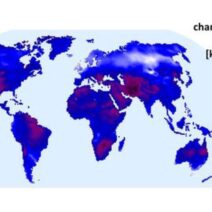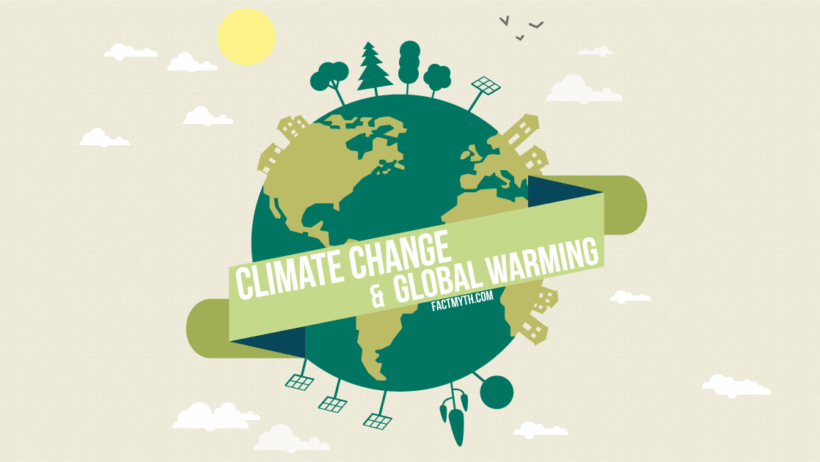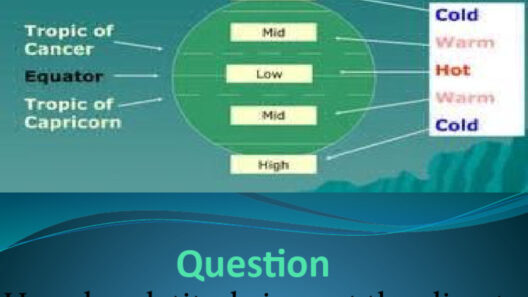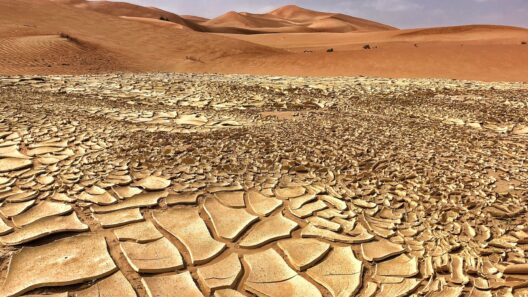Understanding the distinction between climate change and global warming is integral to grasping the current environmental discourse. Both terms are commonly misconstrued as synonymous, yet they advocate for distinct processes within the Earth’s atmosphere. This article seeks to elucidate these concepts, their interrelation, and their implications for our planet.
The Terminology: Defining Climate Change
Climate change refers to long-term alterations in temperature, precipitation patterns, and other climatic factors on Earth. It encompasses a broader array of environmental shifts, including extreme weather events, rising sea levels, and the disruption of ecosystems. While these changes can occur naturally over millennia, the contemporary focus is primarily on anthropogenic factors—human activities such as deforestation, industrialization, and fossil fuel combustion that have escalated the natural cycle of climate variability.
Within this context, the climate system is a complex interplay of various elements, including atmospheric gases, ocean currents, and terrestrial ecosystems. Interactions between these components form a delicate balance; when disrupted, the consequences can be severe, impacting biodiversity, food security, and human health.
The Phenomenon of Global Warming
Global warming, on the other hand, is a specific aspect of climate change that centers on the increase in Earth’s average surface temperature due to elevated concentrations of greenhouse gases such as carbon dioxide (CO2) and methane (CH4). These gases act like a blanket, trapping heat in the atmosphere and creating the greenhouse effect. While global warming is a critical part of the ongoing climate crisis, it is but one manifestation of a more extensive, multifaceted phenomenon.
Understanding that global warming is primarily linked to human-induced emissions is crucial in addressing the root cause of this temperature rise. The consequences of global warming are pervasive, influencing weather patterns, sea levels, and habitats across the globe.
How Global Warming and Climate Change Interact
While global warming and climate change are interconnected, their relationship merits further exploration. Global warming is a driver of climate change; as temperatures rise, climatic patterns shift, leading to such phenomena as increased storm intensity, altered rainfall distribution, and prolonged droughts. However, the ramifications of climate change are not solely dictated by temperature increases. Other factors play a pivotal role, including land use changes, ocean temperature variances, and the natural cycles of the Earth itself.
Thus, while it is accurate to say that global warming contributes to climate change, the reverse statement does not hold true. Climate change encompasses a range of both anthropogenic and natural influences that extend beyond mere temperature rise.
Why Distinguishing Between the Two Matters
The distinction between climate change and global warming is not merely an academic debate; it has profound implications for policy-making, public perception, and action against environmental degradation. Misunderstandings surrounding these terms can lead to a lack of urgency in combating climate issues. If people equate global warming with climate change without recognizing the broader implications, they may underestimate the need for comprehensive strategies aimed at addressing the multifarious impacts of climate change.
This understanding is essential for developing effective policies aimed at mitigation and adaptation. Recognizing the complexities of climate change—including its socio-economic effects, health implications, and ecological consequences—furnishes policymakers with the data necessary to create targeted solutions.
Bridging the Knowledge Gap: Public Engagement Strategies
To foster a greater understanding of these terms, it is crucial to engage the public through various channels. Educational initiatives, community workshops, and social media campaigns can be instrumental in disseminating clear, accurate information about climate science. Simplifying complex scientific concepts without oversimplifying them remains a challenge, yet it is vital for public engagement.
Visual aids, such as infographics and illustrative diagrams, can serve as powerful tools to convey information effectively. For instance, a visual distinction between climate change effects and the global warming trend can foster better comprehension of the issues at hand.
Encouraging critical thinking about the environment is equally paramount. Engaging individuals in discussions about their personal contributions to climate change and potential mitigation strategies can empower them to take actionable steps towards fostering sustainability within their communities.
The Role of Innovation and Technology
In the face of climate change, innovation and technology emerge as pivotal allies. From renewable energy advancements to carbon capture tools, the scientific community is tirelessly working towards devising solutions that can alleviate the strain on our planetary systems. Understanding the significance of these innovations—alongside the climate change narrative—can galvanize public support for policy changes and funding towards sustainable initiatives.
Conclusion: A Call to Action
In conclusion, understanding the nuances between climate change and global warming is of paramount importance in tackling the environmental challenges facing our planet. While global warming highlights critical temperature rises due to human activities, climate change encompasses a broader spectrum of transformative effects.
By distinguishing these terms, cultivating public awareness, and advocating for technological innovation, we can foster a more proactive approach to combating the pressing issue of climate change. Collective efforts must be made to address the intricate layers of this crisis, ensuring a sustainable future for generations to come. As stewards of the Earth, it is our responsibility to educate ourselves and others, paving the way for impactful change.






